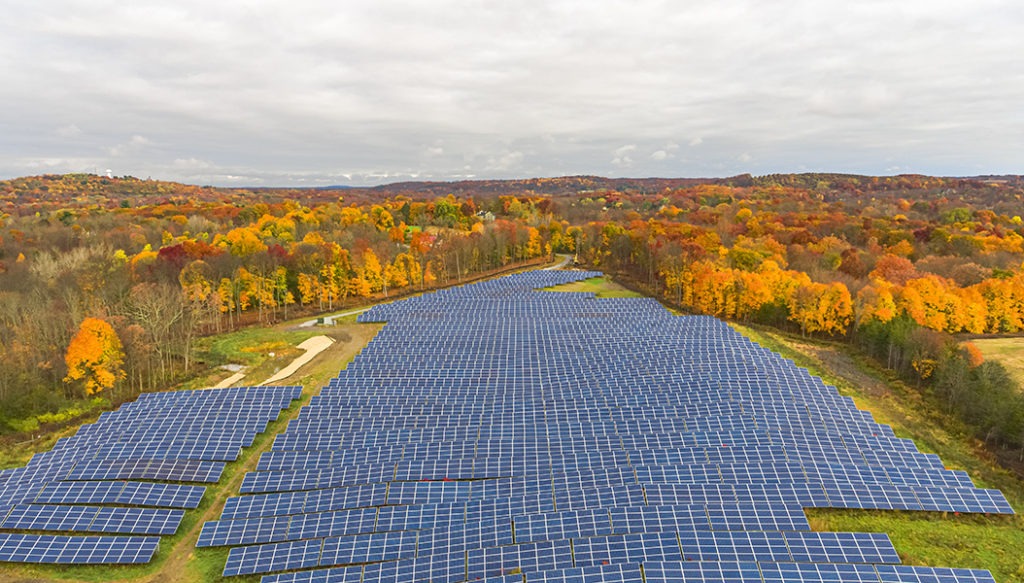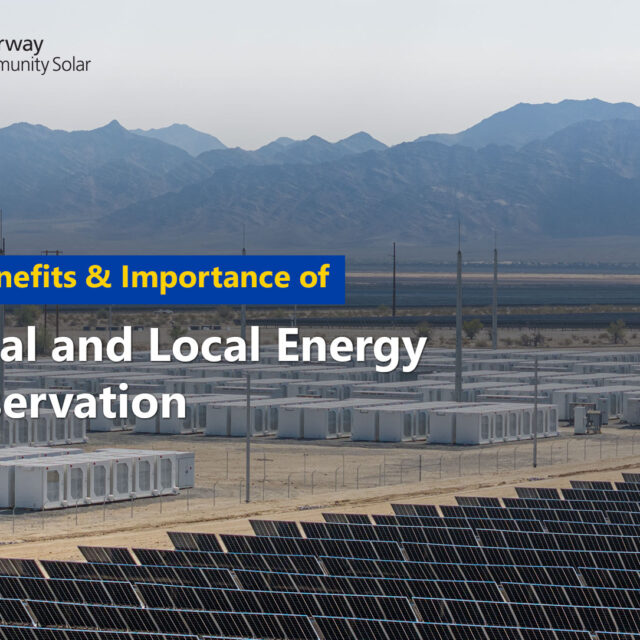
If you choose to support renewable power, you might be wondering, will being a clean energy advocate cost you more money or will it help you save money? When residents or businesses decide to go solar, they have a number of components to evaluate, including upfront costs, if the rooftop solar tax benefits are worth it, and any potential ongoing maintenance costs. If you are thinking of going solar by joining a Community Solar farm, understanding how the program works and your contract terms are key to understanding how the Community Solar provider can help you save money on energy costs.
Check on Guaranteed Savings Offers
Many Community Solar providers now offer a savings guarantee. This is a contractually guaranteed discount on the cost of the solar bill credits that customers receive as a result of their Community Solar subscription. Here’s how Community Solar saves money by issuing solar bill credits to customers:
- Every month, a customer’s allocation (their assigned portion) of the Community Solar farm produces solar energy. The amount of solar energy produced can vary by the seasons. For example, sunnier times of the year will result in more generation, even though the solar farms work great in winter as well.
- The amount of solar energy produced by a customer’s individual allocation is measured by the utility in kilowatt-hours. Those kilowatt-hours are multiplied by the current utility rate and converted into a dollar amount. The resulting dollar amount is the value of the bill credit reward, or “solar bill credit,” that the utility is responsible for applying to the customers utility bill.
- When the solar bill credit is applied to a customer’s utility bill, just like any bill credit, the bill is reduced. In different regions, the solar bill credit may be applied to select parts of the utility bill.
So, with Community Solar, you’ll have saved money on your utility bill thanks to the solar bill credits issued. But, there’s an additional component. You must also pay the solar energy provider, separately from your utility, for the cost of the solar bill credits. Here’s how that works:
- The Community Solar provider is not an energy supplier; the solar energy produced by a Community Solar farm goes to the power grid, rather than one individual property, which means there is more renewable energy fueling the power grid and communities. Energy supply still comes from the energy supplier, often a customer’s utility and a customer is responsible for paying their utility bill, with the solar bill credits, as described above.
- The Community Solar provider will send its customers an invoice, too. The Community Solar invoice is for the cost of the solar bill credits, with the guaranteed discount.
By way of example only, if the Community Solar provider guarantees a 10% discount, that typically means they are taking 10% off the cost of your solar bill credits. In this example, if you received $100 in solar bill credits (which would mean $100 off your utility costs), your Community Solar provider would charge you $100, minus an additional 10%, or $90. In summary, if you received a $100 discount on your energy costs from your utility, and then paid $90 for that $100 discount, you would have saved $10 by way of your Community Solar subscription.
Does Community Solar Save Money if There’s Not a Guarantee?
Some Community Solar providers may not offer a savings guarantee. Or, it is also possible that Community Solar providers have simply offered different savings products over time. If there is not a guaranteed savings assurance with your Community Solar provider, you can still save money. In fact, the program is designed to help you save money, just on a different structure.
Community Solar providers have a team of analysts that do lots of research on historic utility rates: when rates went up or down, by how much, during what time of year, and more. Upon looking at historical data, Community Solar providers can make highly educated models around likely future utility costs. Then, the providers design rates for the cost of the solar bill credits with their knowledge of solar production and hedging against the historical utility models developed. This might mean that during certain times of year when solar production is lower, customers won’t save on a month to month basis, but the savings model is rather designed for savings over time. By way of example only, imagine if a company looked at historical gas prices and were able to estimate what you are most likely to pay for gas over time. Then, that company designed a rate on gas that set you up to save. Community Solar is similar in that way – the rate, while it may not guarantee savings, is designed to help customers save over time based on thoughtful calculations, research, and models.
Other Ways Community Solar Helps Save Money
Most Community Solar programs offer several other cost-saving benefits. For starters, there is typically no cost to join a Community Solar farm— no enrollment fees, membership fees, etc. Customers are not usually charged by a Community Solar provider until the solar farm is fully constructed, inspections are complete, and the farm is activated. In short, charges shouldn’t be expected until the solar bill credits are being generated; no charges until you are receiving the benefit of a Community Solar subscription! Then there are maintenance considerations. With rooftop solar, you may need to consider maintenance costs over the years or seasons. By contrast, Community Solar farms are managed and maintained offsite and maintenance fees are unusual. Lastly, Community Solar offers aren’t accompanied by green power premiums that you may see with retail electric plans that offer “green energy” or renewable energy supplied from wind farms or solar farms. Typically retail electric customers will pay a higher rate for those plans, despite their intention of helping the environment.
If you want to do something good for the environment and help the move toward a future powered by renewable energy, Community Solar is free of green-power premiums, sign up fees, maintenance fees, and are accompanied by great rates and offers. If you’d like to explore a Community Solar offer in your region, see what Clearway, the largest Community Solar provider in the U.S., has available in your area today and check out how Community Solar can save you money with this solar savings calculator.
Savings calculated on the value of the solar bill credits generated by the residential solar subscription and varies by region. Clearway is not responsible for utility delays in applying solar bill credits. Refer to the community solar contract for full agreement terms. Subject to credit approval and 20-year agreement.









